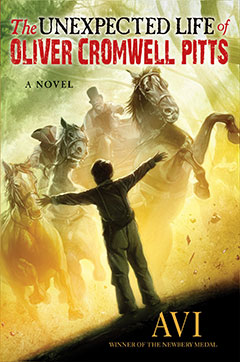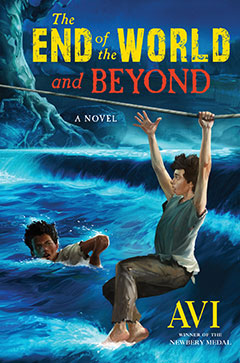 It’s wonderful to receive a review (The Unexpected Life of Oliver Cromwell Pitts) that reads: “Riveting…This first in a new series will capture the hearts and minds of readers and history buffs alike … Avi’s examination of the plight of the desperately poor is worthy of Dickens. Impossible to put down.”
It’s wonderful to receive a review (The Unexpected Life of Oliver Cromwell Pitts) that reads: “Riveting…This first in a new series will capture the hearts and minds of readers and history buffs alike … Avi’s examination of the plight of the desperately poor is worthy of Dickens. Impossible to put down.”
But then, please note, I am already committed to writing a sequel! How am I ever going to match this?? Frankly, it’s daunting.
There are all kinds of things the writer must do to begin such a project. First, you have to create a veritable catalog of the facts about your characters (particularly your main characters), aspects with which you must now live (and use) as you go forward. Age. Height. Gender. Mannerisms. Clothing. Patterns of thinking. Culture. To cite a few. Then there are speech configurations. Perhaps certain speech quirks. Even particular words. Does your character say “Sure,” or “Okay,” or “Why not?” Or perhaps just shrugs. Then there are attitudes: does he like this person but not that one? Also, does do your characters evolve in the course of the book?
Now mind, I wasn’t particularly fussy how I laid these things down in the first book. Get it right, I’m mostly thinking. But as I go forward into the next book, I MUST make use of what I have done. Like it or not, you have created a template. And—let it be noted—that one of the reasons readers like sequels (and series) is because the character(s) is familiar.
 I believe it was John D. MacDonald—of mystery writing fame—who suggested that if you are going to write a series—write the first three before you publish anything. Sometimes, if your timing is right—and it was here for me—you are working on the second book before the first book is set in stone. That is to say, it was only during the final phase of publishing the first Pitts book that I considered what would happen in the second Pitts book. I had a general sense, but hardly precise. I could, and did, make some adjustments
I believe it was John D. MacDonald—of mystery writing fame—who suggested that if you are going to write a series—write the first three before you publish anything. Sometimes, if your timing is right—and it was here for me—you are working on the second book before the first book is set in stone. That is to say, it was only during the final phase of publishing the first Pitts book that I considered what would happen in the second Pitts book. I had a general sense, but hardly precise. I could, and did, make some adjustments
And oh, yes, having a good memory is vital. Let it also be said that a good editor and copy editor is crucial. You will get notes: “In book one, chapter seven, line twelve, you wrote.…”
But now that the sequel—The End of the World and Beyond—has been written and is about to be published, early reviews have come in:
“Told in appropriately 18th-century diction, Oliver’s picaresque is a harrowing page-turner that takes an unflinching look at what life was like for those living in servitude in the American Colonies. Oliver is quietly heroic but also realistic as he endures his fate. African Bara, though seen through white Oliver’s eyes, is given trope-defying agency, his intelligence and superior knowledge of the territory and customs putting him in the lead but never at Oliver’s service. Brief back matter gives historical context to this sequel. Action-packed and inspirational—another stunner.” (Kirkus)
Whew.
2 thoughts on “The Second Book”
Wow! Those are pretty sweet reviews, Avi.
The John D. MacDonald advice is wise … but would be hard to follow for a working writer trying to put food on the table!
Amazing reviews, which doesn’t surprise me, but I’m sure it’s a relief for you after all of your work. Can’t wait to read #2!